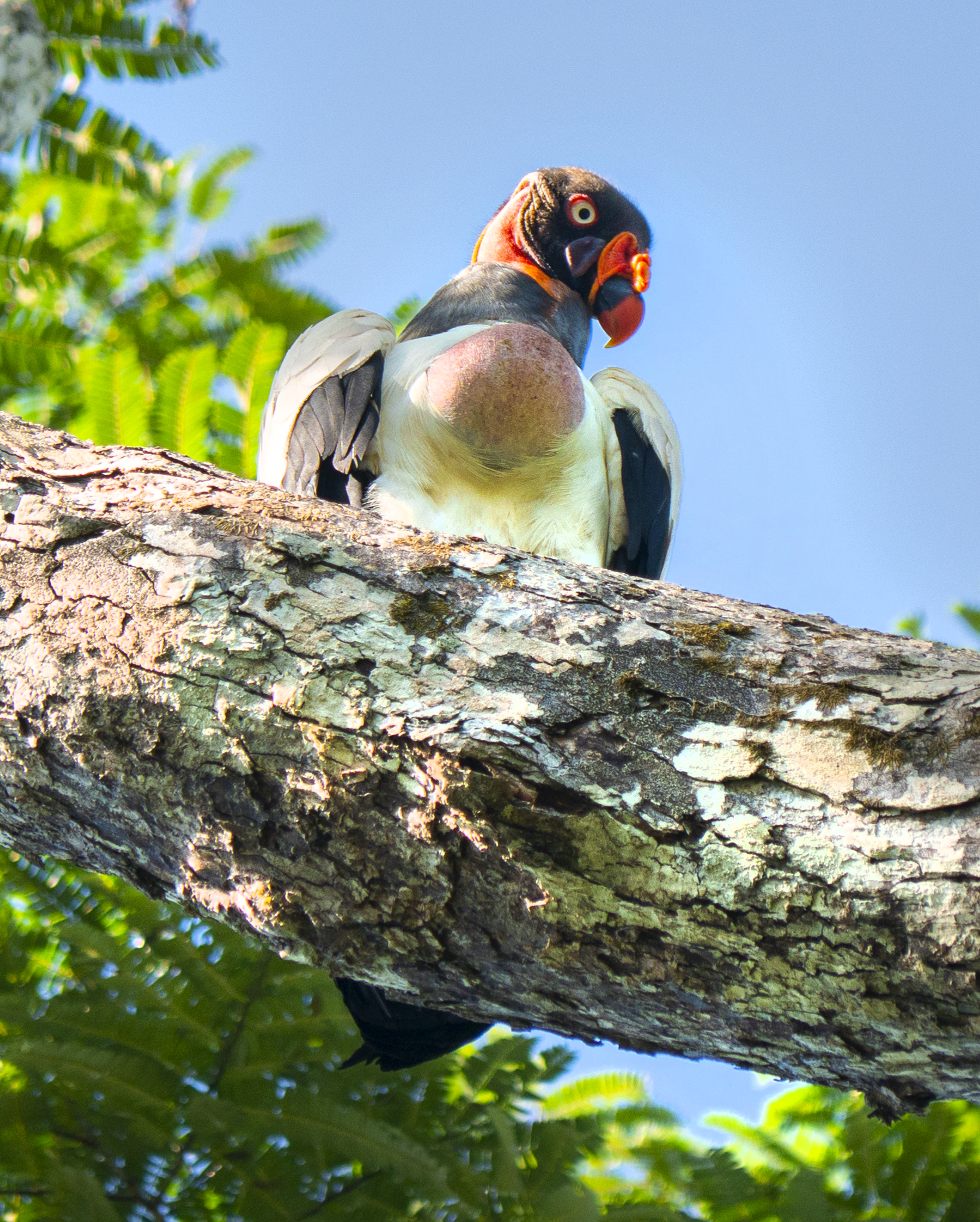Long live the King!
Say hello to the King Vulture. With a bright orange caruncle at the top of its beak, and a large featherless crop on its chest, this mighty bird one of the most visually striking creatures on the planet.
The caruncle is designed to attract a mate – the larger and brighter it is, the healthier and stronger its owner. The crop is a ‘forestomach’ that allows the bird to store for later food which it cannot fit into its main stomach. The prominent, bulging nature of this bird’s crop suggests that it has gorged itself on something very recently.
Like all members of the vulture family, a King Vulture’s diet consists almost entirely of carrion – dead animals. Indeed, its designation as ‘King’ refers to its tendency to displace smaller vultures at a feeding site. King Vultures have a much stronger beak than the Turkey Vultures and Black Vultures that share its habitat, and consequently it usually makes the first incision on a fresh carcass, allowing the other vultures easy access once the King has had its share.
With wingspans of up to two metres, the King Vulture’s closest evolutionary relative is the mighty Andean Condor. However, while condors prefers the high altitudes of the Andes, the King Vulture makes its home in lowland tropical rainforests. Indeed, my guide in Pacaya Samiria National Reserve (who didn’t speak any English) introduced this bird as ‘El Cóndor de la Selva’ – The Condor of the Jungle.
These birds are relatively common across South and Central America, however, their tendency to inhabit dense, impenetrable jungle can often make them quite challenging to find.
–
King Vulture (Sarcoramphus papa), Reserva Nacional Pacaya Samiria, Peru 🇵🇪


